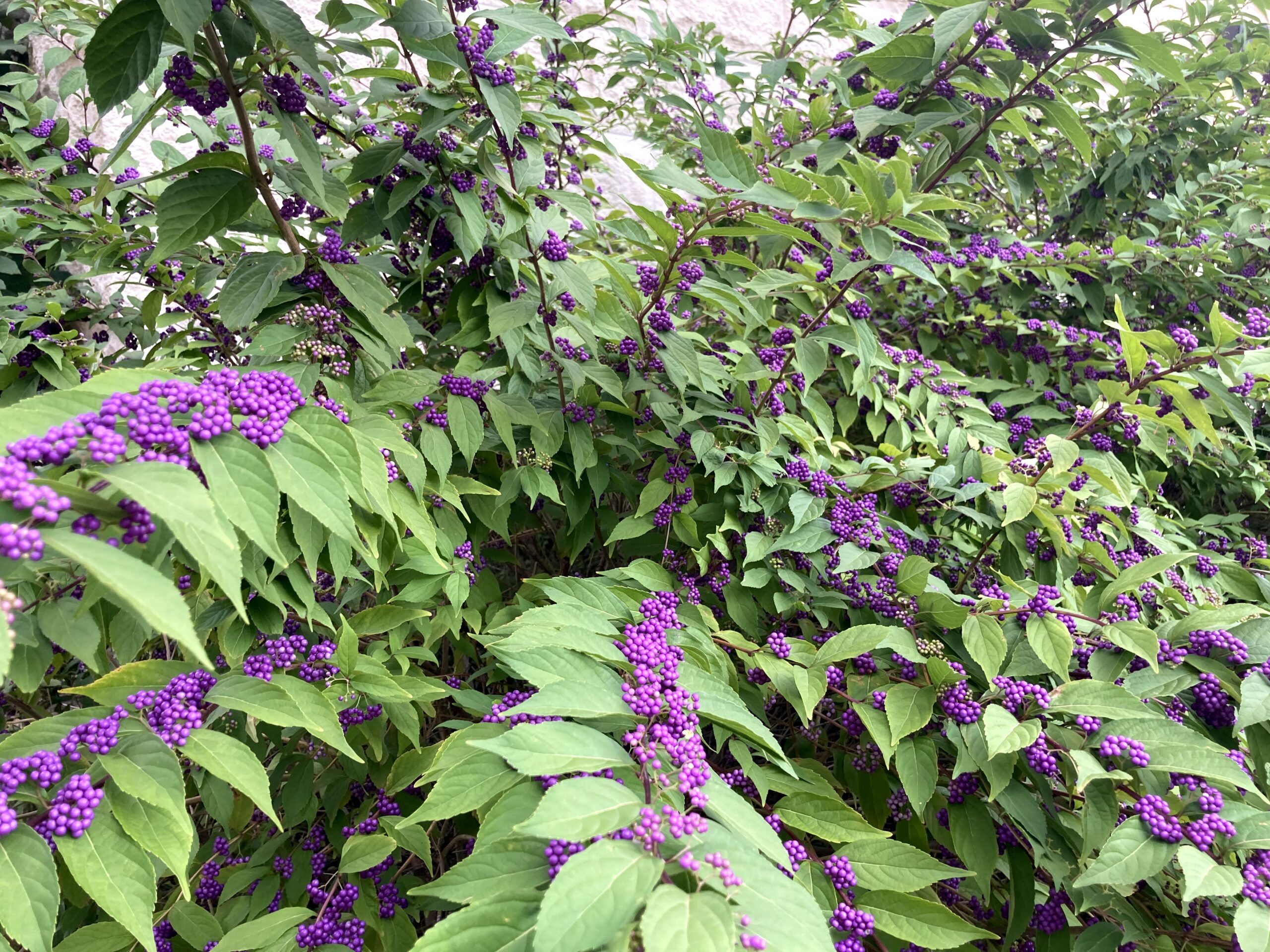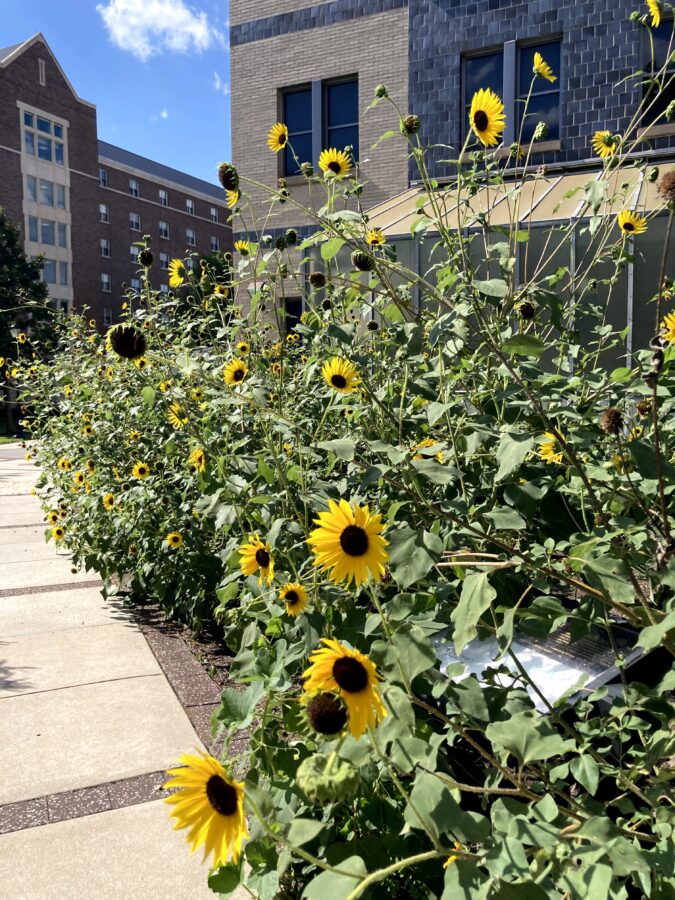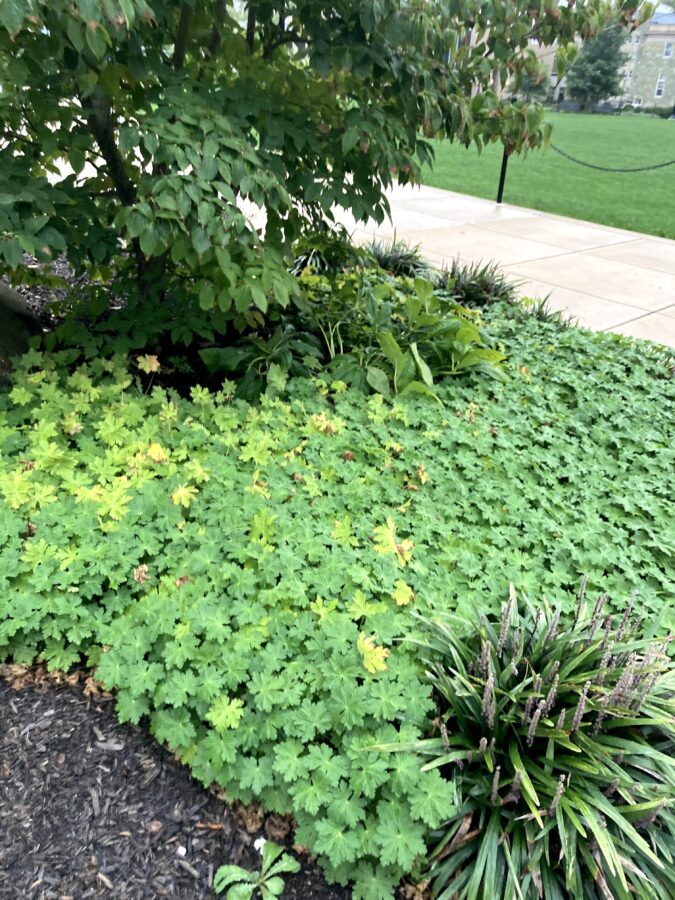Photo by Kristine Kearns.
In our current world, we sometimes forget to stop and smell the flowers. There is always work to be done, politics to be discussed and for a lot of people, winter usually comes with depression. The near end of the semester seems to bring stress and anxieties indoors, especially given the past two years shaking the state of the entire world. One of the many ways to reground ourselves is to reconnect with the earth through gardening, hiking and appreciating our environment. You may pass by dozens of plants just on the way to class, but never really know enough about them. In anticipation of a dreary winter, it feels like the right time to appreciate the nature we’ve seen, including all the different flowers and plants that are spotted around campus. So, take a breath, stop and smell the flowers and spot the campus plants with me.
For those who were on campus from the start of the semester or made visits over the summer, you may have spotted some white and yellow blooms located right near the Rammy statue. Here lives the oxeye daisy. Its scientific name, Leucanthemum vulgare, commonly blooms in the summertime because it requires full sun. It’s a moisture-loving plant, that needs to be planted and fertilized once in the spring and be pruned once a month of diseased leaves. An oxeye daisy needs excellent drainage and is known to pop up in gardens, on roadsides and is easy to maintain in terms of pests and diseases. The daisy, a popular flower, is also a pollinator plant; it attracts bees and butterflies which promotes healthy native ecosystems.
I always enjoy walking up the steps past the arched passageway and past Anderson Hall where a bed of grape leaf anemone flowers live. These flouncy white plants have gone from buds to blooms as the fall semester progressed. These flowers enjoy average water levels, fertilization every few months during their growing season and a clay-based soil. Careful when touching these flowers, however, for they contain an oil called protoanemonin that can mildly irritate skin and pets. The grape leaf anemone wildly grows on mountain grass slopes and in thin forests. What a lucky sight to see for students as we pass by this plant on our ways to and from the Quad.
A name that shall not be forgotten, the purple beautyberry, can be found around corners of residential buildings. These beds of purple bead-like flowers, scientifically called Callicarpa dichotoma, soak up water every week and love to be fertilized every six months. They are typically planted in mid-to-late Autumn and can also be planted indoors. It is a lush ornamental plant not difficult to grow in full sun.
Many campuses draw their attraction through their variety of foliage. Having an array of attractive plants in the ground draws in more students, therefore earning the university more money, and having a larger and more popular class size and raised academic standards. One unique aspect of West Chester University, specifically, includes the campus gardens. The campus garden, specifically the North campus garden located in an alcove next to the planetarium, is where you can find an abundance of plants grown for ecosystem services including our own observation. According to the campus garden website, WCU “…currently has four gardens that follow organic principles, and offer a place for research, teaching, volunteering, experiential-learning, service-learning and recreation.” One of the most striking features in the north campus garden during the late summer and early Autumn is the common sunflowers sprawled into stone path aisles. The sunflowers are easy to take care of, overall, love to be in full sun and look beautiful when cut. Another north campus garden flower includes the goldenrod; a lone brush of golden trims that set up a beautiful September. Alongside the north campus garden, lay the south campus garden, the Tanglewood garden, and the pigment and dye garden. All gardens provide an appeal, a place to study, an object to study for science classes, food and materials to use and an aid to the environment.
Across the street from the Philips Memorial Hall grows a bed of Russian sage, often out of sight unless entering one of the math or business buildings. Russian sage is similar to lavender. Both types of flowers are spotted around campus, and both are equally as soft and resistant to pests.
Around the corner from the Francis Harvey Green Library creeps a lush green bed of leaves called the Dove’s-foot crane’s-bill. This green leaf, also known as Geranium molle, loves a moisture-filled soil and often grows all year ‘round. This plant is usually incorporated in borders of gardens because of its ability to repel pests and attract pollinators.
Finally, flowers to enjoy and often catch my eye are the New York Asters. In a bed by the door of the library and often in beds near campus statues, the pink and purple star-like flowers begin as small buds and bloom in the spring and summer.
Learning about campus plants and all of their various benefits, sometimes financially and institutionally driven, is a relaxing way to take one’s mind off the business of a school semester. Between sessions, I use a plant identification app, like one called “PictureThis,” to learn about the eye-catching array of botany surrounding me. As stress grows, so will campus plants, and that always puts life in a brighter perspective amongst the heavier topics often talked about.
Kristine Kearns is a second-year English major with minors in Creative Writing and Sustainability. KK947319@wcupa.edu




The presence of plants even helps hospital patients!